Relief pitchers are a fickle beast. One second they’re great and suddenly they’re not. Ironically, teams with the most dominant bullpens year after year often undergo serious turnover. The 2019 Rays had just two relievers on their opening day roster that appeared in the ALDS that year and their pen was lights out.
Just last year Jake Cousins, Kendall Graveman, Paul Sewald, and many others came out of seemingly nowhere to dominate for their clubs. Here are five bullpen arms who are ready to make a similar seismic leap in 2022.
Camilo Doval, San Francisco Giants
I can hear the fantasy baseball-ers screaming, “WE KNOW HIM” and anyone drafting this early should know Doval. He is projected to close for one of the best teams in the National League and has an ADP around 150 on NFC. But for the sake of this piece, he is still relatively unknown.
Doval struggled during his first stint with the Giants. He allowed four home runs and walked six batters in just 10.2 innings (12 appearances) before being sent back down to the minors in mid-May. The command of his slider was not quite there yet and he, whether it was a lack of command or poor design, left his fastball over the middle of the plate far too often.
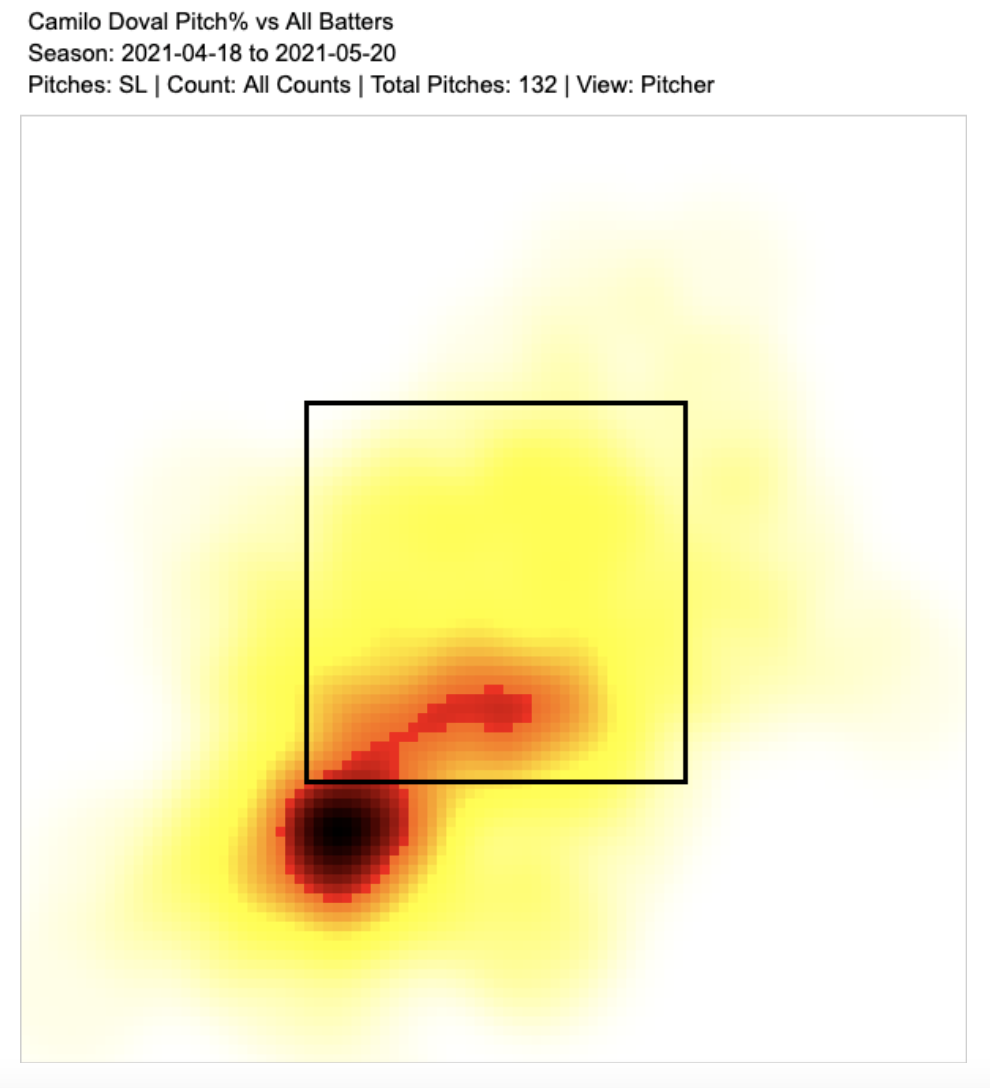
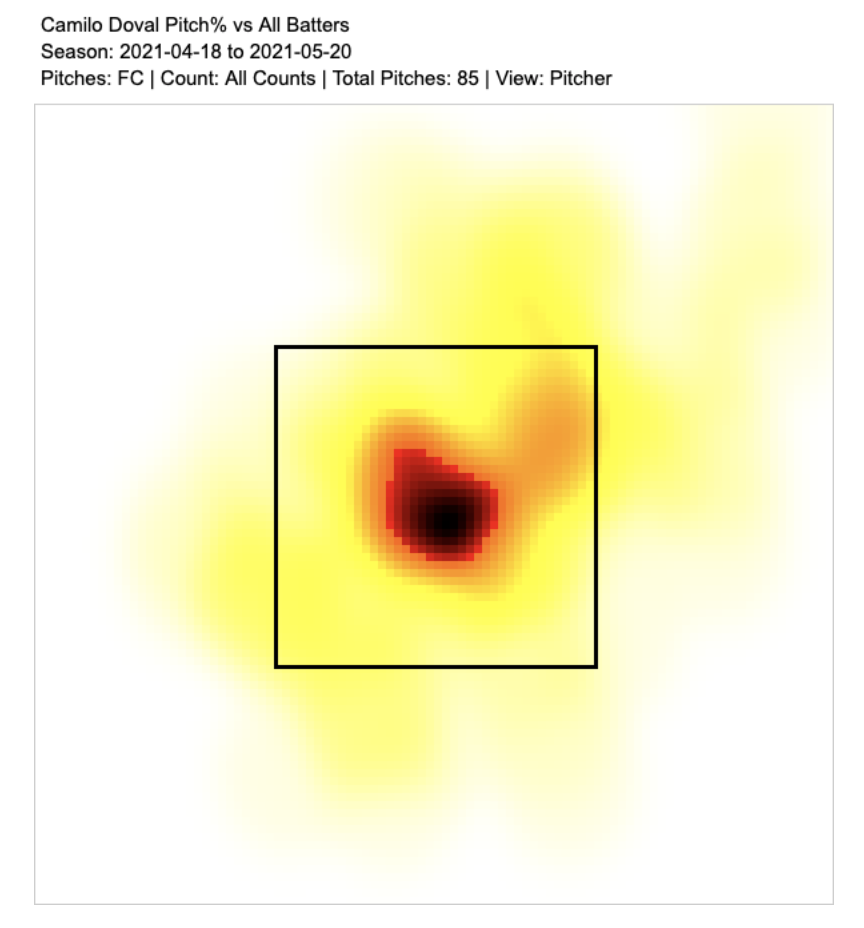
He returned in August with better command of his slider and a slightly varied plan of attack with his fastball.
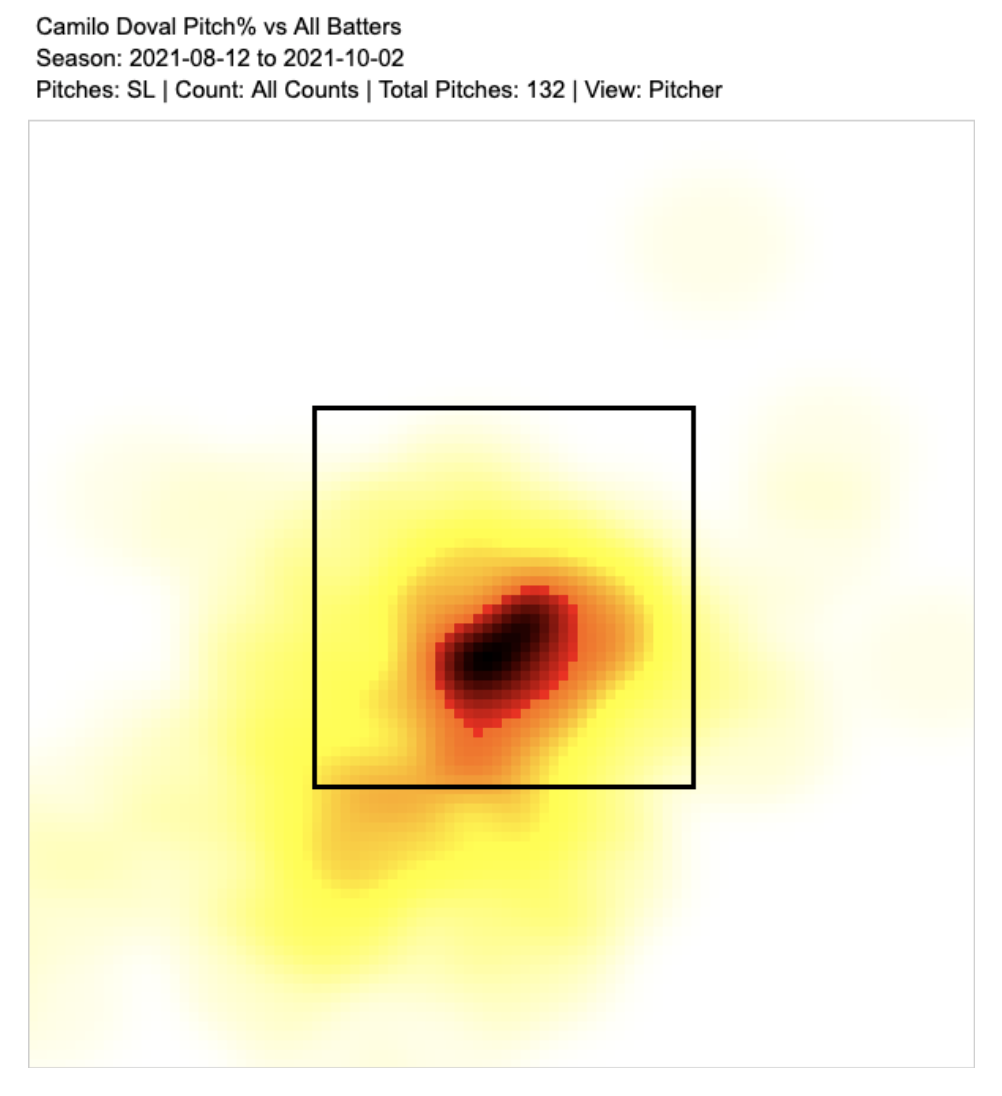
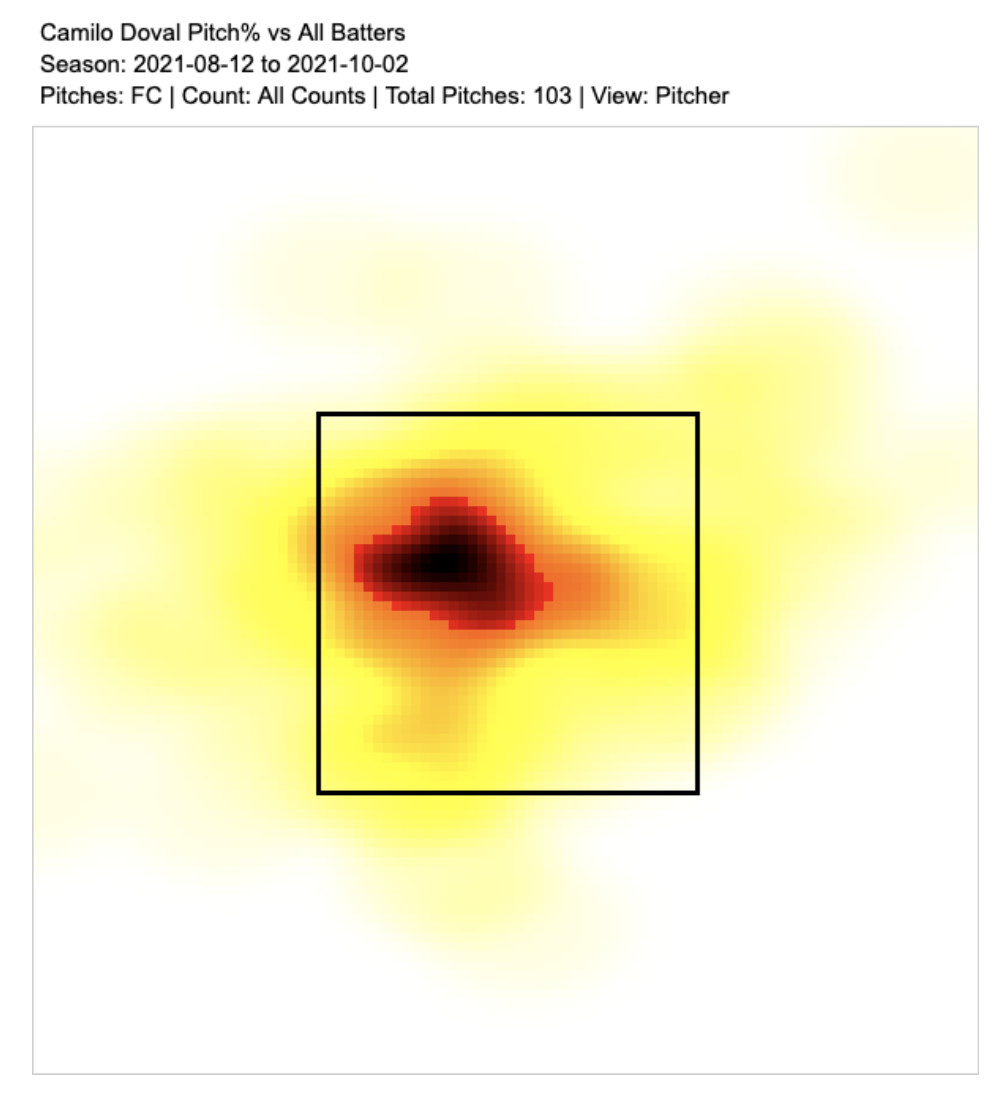
Fueled by these two adjustments, Doval emerged as a weapon in the Giants’ crowded pen. He struck out 40.6% of opposing hitters, walked just 5.1%, and gave up zero ER over 16.1 IP after that initial demotion. So impressive that the Giants had Doval close in the playoffs.
His fastball-slider combination is lethal and reminds me of a young Edwin Díaz. The heater sits at 98 mph and regularly touches triple digits. It was also in the 98th percentile in terms of spin last season but did not have the type of ride expected with that type of spin.
The pitch may also just be a cutter. FanGraphs labels it as such while Baseball Savant calls it a four-seamer. Its movement profile tells us it is somewhere in between. It helps Doval induce a high number of ground balls (over 50% GBs across 62 batted balls), which sounds more like a cutter than a traditional fastball.
Nevertheless, the sky is the limit for Doval. He refined his control, pitches for one of the smartest teams in baseball, generates tons of swings and misses, and keeps the ball on the ground. He could be one of the top relievers in baseball this season, regardless of role.
Alex Vesia, Los Angeles Dodgers
The Dodgers create relievers in a lab, I’m sure of it. Last year alone they turned Phil Bickford into a piece, revived Blake Treinen, and developed Vesia into one of the most interesting left-handers in baseball. Check out some of his fastball whiffs here.
https://gfycat.com/heartyvelvetyammonite
Hitters have a lot of trouble catching up with Vesia’s heater. It had the fifth-highest whiff rate among fastballs thrown at least 100 times last season at 38.6%. It also had the highest whiff rate when in the heart of the zone at 32.7%. So, even his mistakes are hard to wrangle. However, Vesia’s fastball is barely harder than league average at just 93.8 mph.
It is able to miss bats with such modest velocity because of its incredible ride. Despite coming in 5 mph slower on average, Vesia’s fastball has virtually the same ride as Jacob deGrom’s and rises 24% more than league average. That is what sets him apart.
Vesia’s slider is solid as well. It has some bite at 85 mph and breaks 22% more than league average: not some type of devastating sweeper but a passable pitch. It earned a 42.2 whiff% in 2021 and helped Vesia to a 38.7 K% against left-handed batters.
Left-handed sliders are more effective against lefties though and Vesia falls short in his approach against right-handed hitters. He only threw that slider 5.8% of the time against them compared to 30.4% against LHB. Instead, he opted for his less impressive changeup and was less effective overall.
Ironically, Vesia’s changeup was his only pitch graded as plus on FanGraphs as a prospect:

I am nitpicking here, especially since L/R splits are largely irrelevant in this small of a sample, but it is telling that Vesia threw none against LHB. Instead, it was almost as if Vesia used his changeup to mimic his slider as a pitch that ran away from RHB. Check out the slider’s location on the left and changeup’s on the right.
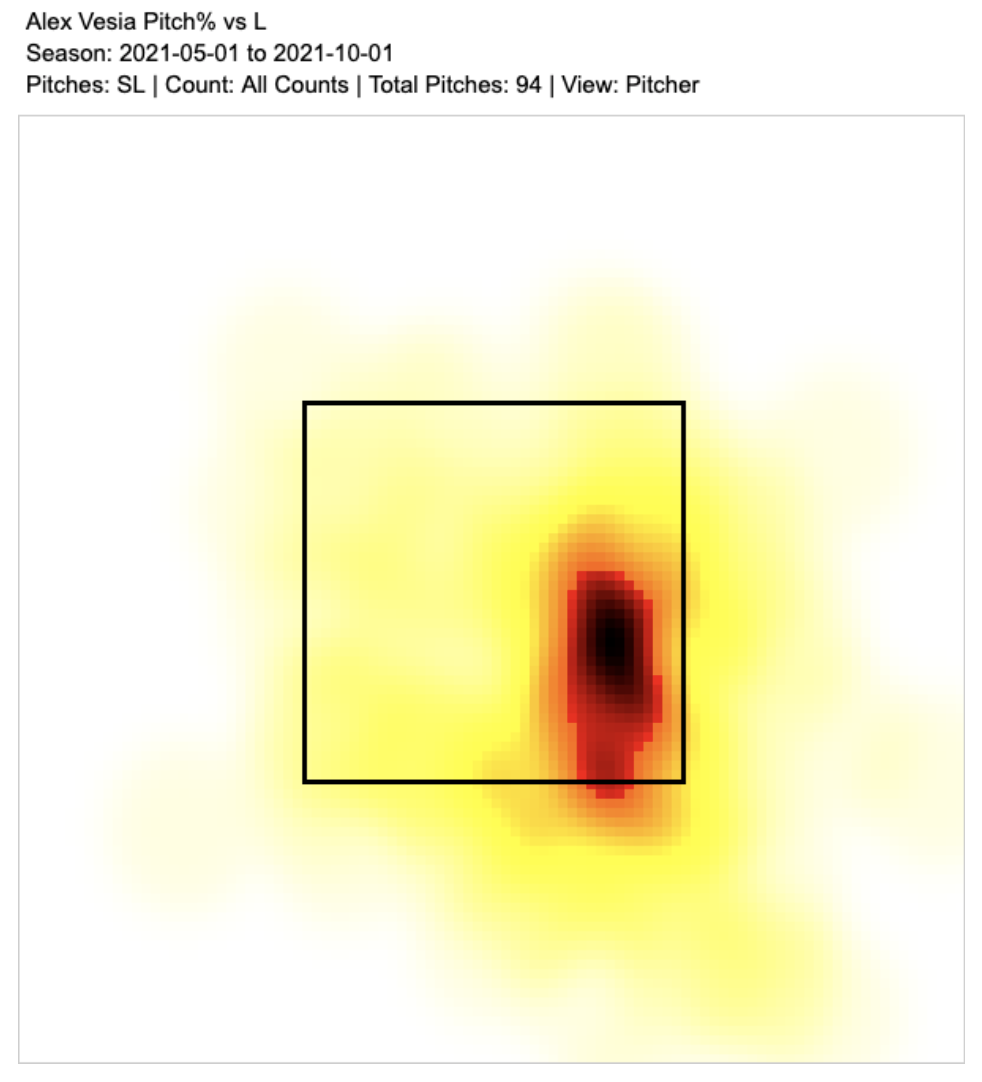
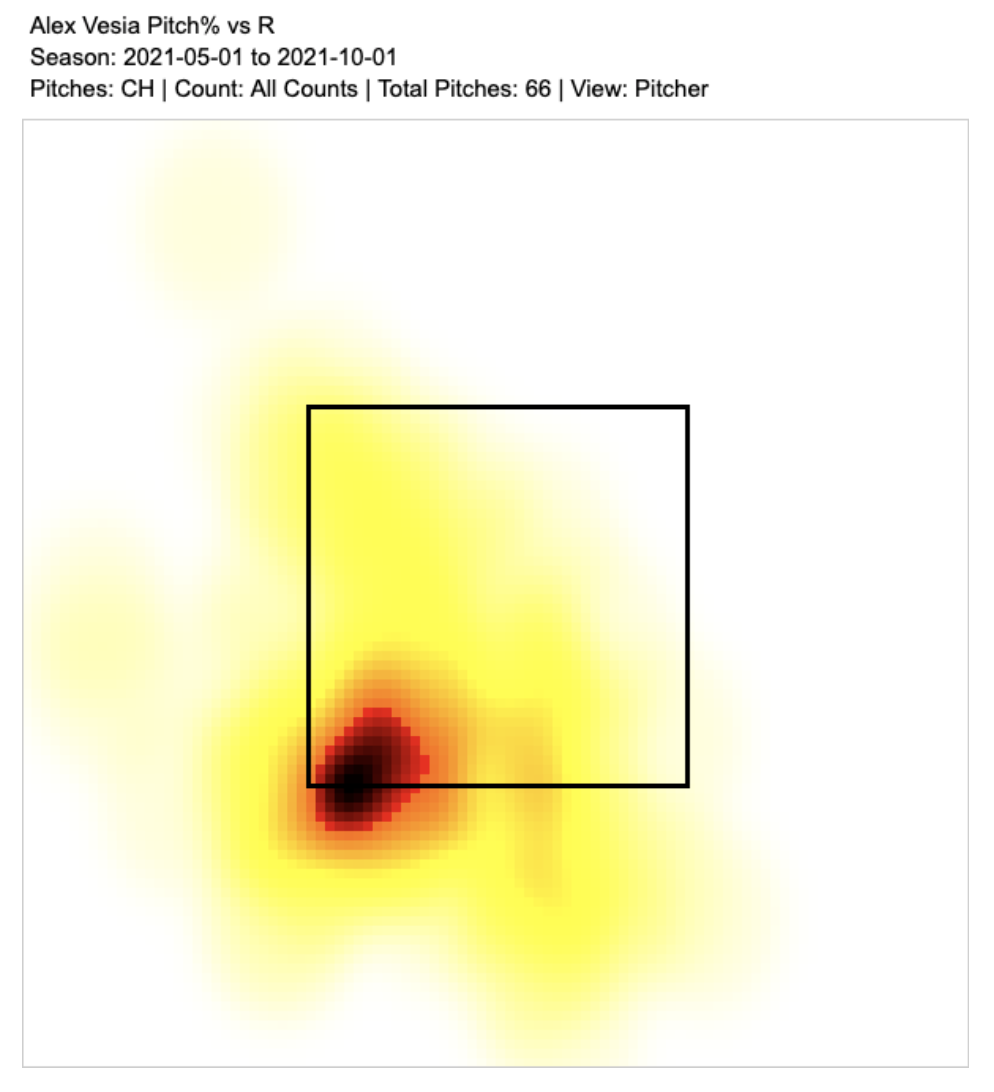
They have identical velocity and move similarly so this is not the worst strategy, but changeups will rarely get the same degree of whiffs as a slider and you saw the differences in his L/R splits. Vesia has the foundation to be one of the best relievers in baseball and it will be fascinating to watch his development this season.
Acquired by the Reds from the Rangers last winter for cash considerations, Warren helped to stabilize the Reds’ unsteady bullpen through June and July. He allowed three ER in 12.1 IP with a 38.0 K% and 8.0 BB% in mostly low-leverage situations before an oblique injury put him on the shelf for more than two months.
He struck out three Dodgers in one inning immediately following his lay-off and then had a smattering of dominant outings against mostly the Pirates and Nationals. He allowed just one hit over six outings against those two teams with a strikeout rate north of 50%.
https://gfycat.com/highlevelunluckyblackwidowspider
You see a lot of sliders here—that pitch is his bread and butter. He threw it 59% of the time last season and it had the eighth-highest swinging strike rate of any slider in baseball: better than Robbie Ray or Max Scherzer. It also had the highest SwSt% for sliders in the heart of the zone which is important for Warren since it’s his primary pitch.
His fastball is less impressive but still good. It has average ride and sits 95 mph which, coupled with that slider, is more than fine. The only fear with Warren’s profile is being susceptible to fly balls while pitching in Great American Ball Park. Otherwise, he could be a very exciting piece for the Reds this season.
The Yankees picked up Holmes at the deadline last season for two mildly interesting middle infield prospects: Hoy Park and Diego Castillo. Holmes had a 4.93 ERA, 23.3 K%, and 13.2 BB% in 42 IP at the time of the trade, which is…not great. Twitter obviously took this opportunity to dunk on the Yankees for a move that seemed poor.
https://twitter.com/TomBuckley87/status/1419773971973738503?s=20
https://twitter.com/angelyankees45/status/1419773427053993987?s=20
The Pirates got Hoy Park for Clay Holmes?
Holmes is having a decent season (minus a few recent outings), but jesus the Yanks are desperate.
— Schlasser (@UrinatingTree) July 26, 2021
Well, as much as we all should have trusted ‘Urinating Tree,’ he was off the mark here because Holmes went on to dominate for the Yankees after some critical adjustments.
He did not throw one curveball after August 6th after throwing it more than 20% of the time in Pittsburgh. Rather, the Yankees had him throw significantly more sinkers. In fact, he threw it more than 75% of the time after September 1st!

There was one outing against the Twins on September 13th where Holmes only threw sinkers: 11 in a row to get out of the top of the 10th unscathed. Watch him strike out Josh Donaldson with three straight here.
https://gfycat.com/requireddifficultagama
Look at that thing move! It drops 25% more than the league average sinker and is even more devastating when commanded on both sides of the plate. Kudos to the Yankees for pulling off a shrewd trade and fully unlocking this out-pitch for Holmes. Now he’s a certifiable weapon.
Anthony Gose, Cleveland Guardians
Gose is both the oldest pitcher on this list and least experienced at the major league level. The 31-year-old has only ever thrown 115 pitches in the bigs and they all came after September 20th of last year, but he is a special case.
Ten years ago, he was the Blue Jays #2 prospect. An uber-athletic center fielder with a rocket for an arm, Gose was thought to be either their lead-off hitter of the future or a valuable trade asset. There was a point where his name was prevalent in discussions for RA Dickey before the Mets settled on Travis d’Arnaud and Noah Syndergaard.
He eventually reached the majors with the Blue Jays in 2012 and played parts of five seasons in Toronto and then Detroit. In 378 games, he hit just 12 HR, struck out 28.2% of the time, and earned an 81 wRC+. It seemed he would never hit enough to be a big-league regular.
The Tigers left him off their major league roster ahead of the 2017 season and Gose returned to the minors intending to pitch. He appeared in 11 games at short-season A ball and flashed mid-90s velocity without a modicum of control. Detroit released him after the season unwilling to undergo the project.
The Rangers took a flier next and gave him an extended look during the 2018 season before also cutting him loose. The Astros gave him a brief look as well before Gose received familiar news.
Cleveland saw some potential and picked him up in 2019. While his command remained spotty, Gose picked up a few ticks of velocity and more strikeouts followed. He burst onto the scene during Spring Training in 2020 as something of a folk-hero with near-triple-digit heat and a quality slider.
https://gfycat.com/spanishbabyishairedale
Then, the pandemic struck and cut Gose off from the team when he was making legitimate headway. In the meantime, Adam Cimber and his wife invited Gose to live with them in Arizona where Gose worked various odd jobs while training on his own.
The lost reps proved meaningful because Gose regressed at AAA to start 2021. He walked 22 batters in just 19 IP for Columbus over the first two months of the season and was not considered for a promotion to the majors.
Despite the poor results, his 100-mph fastball from the left side got him invited to play in the Olympics with team USA. There he forged relationships with veterans David Robertson, Scott Kazmir, and Edwin Jackson. That trio defines experience with a combined 43 years of MLB service and a handful of comeback stories to boot.
They instilled a level of confidence in Gose that he had yet to reach alone. That boost proved critical to his development as he went on to earn All-Olympic honors and returned to Columbus a man on fire.
With nothing left to prove, Cleveland finally called Gose up to the majors in late September. He made six appearances that totaled 6.2 innings, struck out nine batters, allowed two walks, and gassed 18 pitches over 100 mph. Pretty, pretty good.
Apart from plus-plus velocity, Gose’s fastball has exceptional ride. Its rising action compliments his slider (that behaves more like a slurve) well and the two pitches mirror one another.
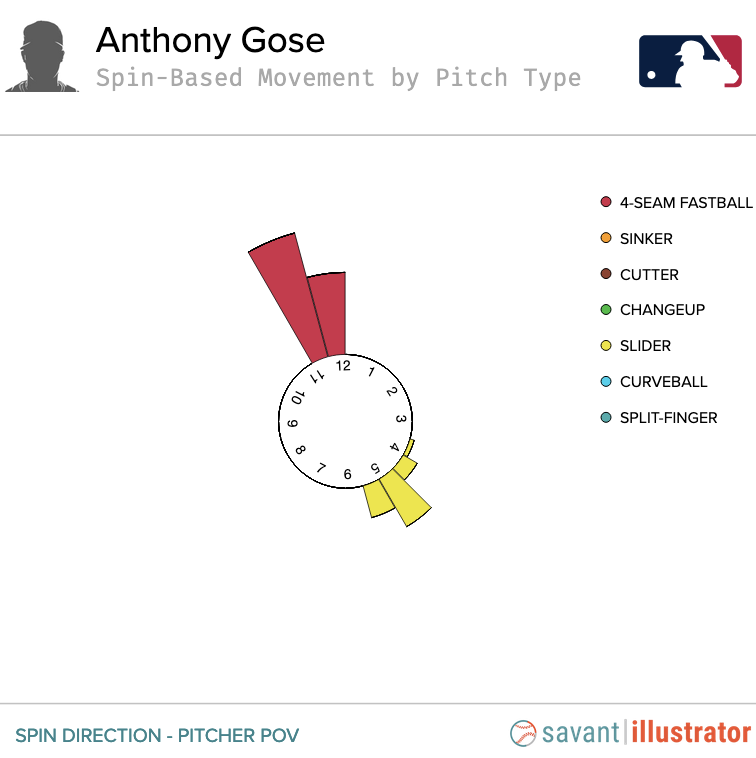
That ‘mirroring’ makes each difficult for hitters to track out of Gose’s hand since the laces appear to be spinning the exact same way. Really, they are spinning and moving in reverse.
It will be fascinating to see how his slider plays with more exposure. He only threw 31 last year, so there is nothing to analyze statistically. It passes the eye test though.
https://gfycat.com/emotionalbeautifulbillygoat
There’s no doubt Gose is a peculiar case, one virtually without precedent. There is reason to believe he can be something special on stuff alone. Add in the make-up and it seems almost certain. Toss in Cleveland’s prowess with pitching development and we could see a monster.
Honorable Mentions
Here are a few honorable mentions who are either still an adjustment away or need to prove their health before making it on this list:
- Evan Phillips
- Yohan Ramirez
- Scott Effross
- Caleb Ferguson
Photos from Icon Sportswire | Adapted by Justin Redler (@reldernitsuj on Twitter)

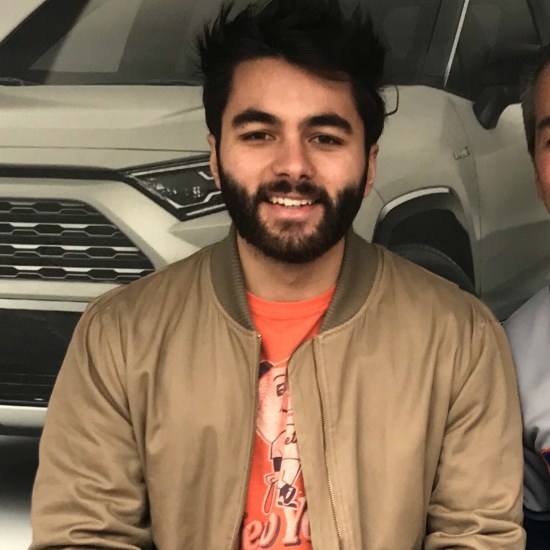
I would say most people coming to pitcherlist know those names
Well, I hope you learned something new about them anyway